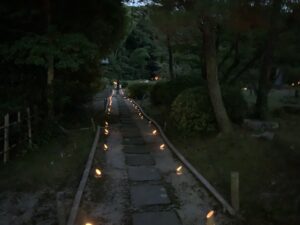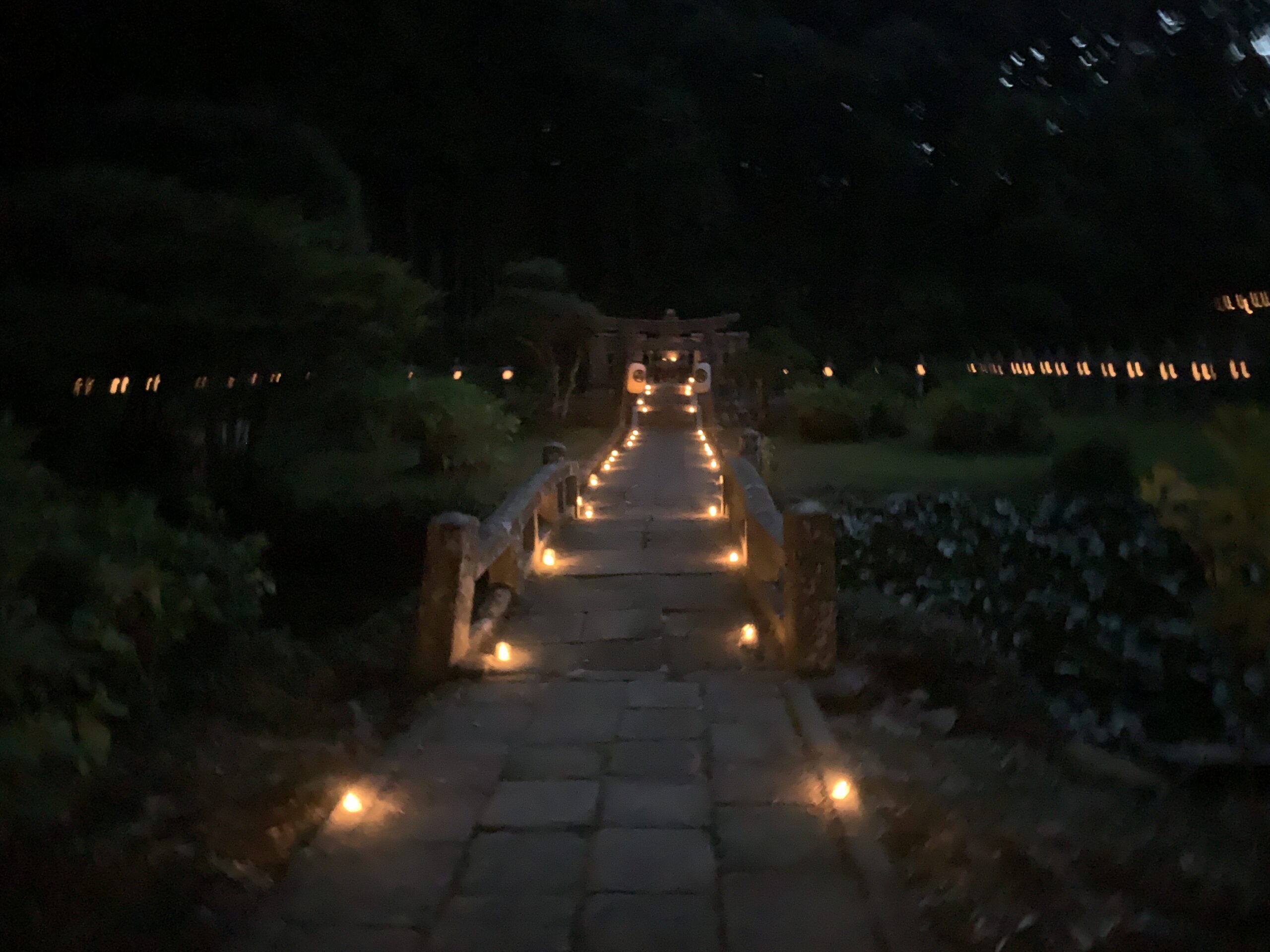Annual Mandoue ceremony offers prayers for peace during Obon season — 15th August 2025, Matsue, Shimane,Japan
MATSUE — On the final day of Japan’s Obon season, a Buddhist tradition when families welcome the spirits of their ancestors with rituals, lanterns, and gatherings, the quiet grounds of Gessho-ji Temple in Matsue’s Sotonakahara district glowed with hundreds of flickering candles, casting a gentle light across the centuries-old cedars and solemn stone tombs for the annual Mandoue ceremony. The ceremony invites visitors to honour the spirits of the Matsue Clan’s feudal lords while offering prayers for world peace.

Participants wandered through the temple grounds, placing candles wherever they felt inspired to do so. Each new flame added to the warm, soft glow that illuminated ancient cedar groves and weathered stone mausoleums of the Matsudaira family.
Misaki Fukuma, a resident of Matsue, said, “I’ve lived in Matsue all my life, but I never knew about this event. I’m so glad I came — it was wonderful to be able to place my candle wherever I wanted.” Marika Sumi, a co-worker of Misaki at a café in the city, visited Gessho-ji for the first time and commented, “I was surprised by how spacious the temple is.”

Founded in 1664 by Lord Naomasa Matsudaira, the first feudal lord of Matsue, the temple was converted from a Zen monastery to the Jōdo (Pure Land) sect to enshrine the spirit tablet of his mother. For over 350 years, it has served as the Matsudaira family temple and final resting place of successive lords. The temple is also famous for its turtle statue, which Lafcadio Hearn — known in Japan as Koizumi Yakumo — described in his 1894 book Glimpses of Unfamiliar Japan, a seminal work on Meiji-era Japan.
Just outside the temple grounds stands a monument to Raiden Tameemon (1767–1825), a legendary sumo wrestler from the late Edo period. Often regarded as the strongest rikishi in history, Raiden achieved an extraordinary official career record of 254 wins, 10 losses, and 41 draws.
Located just north of Matsue Castle, the temple’s position reflects a Buddhist tradition in which the north symbolizes the direction of the Buddha’s passing into Nirvana — a fitting orientation for a place of eternal rest.
ーWords by Takashi Saito
179 Sotonakahara, Matsue
Getting There
| From | By Train / Bus | By Air |
|---|---|---|
| Tokyo | Overnight Sunrise Izumo sleeper train (approx. 12 hrs) | Haneda → Izumo Airport (90 min) / Yonago Kitaro Airport (80 min) + bus/taxi to Matsue |
| Osaka | JR via Okayama, Limited Express Yakumo (approx. 5 hrs) | Itami → Izumo Airport (70 min) / Yonago Kitaro Airport (65 min) + bus/taxi |
| Hiroshima | JR via Okayama, Limited Express Yakumo (approx. 3 hrs) | Hiroshima Airport → connect via domestic flights or rail |

